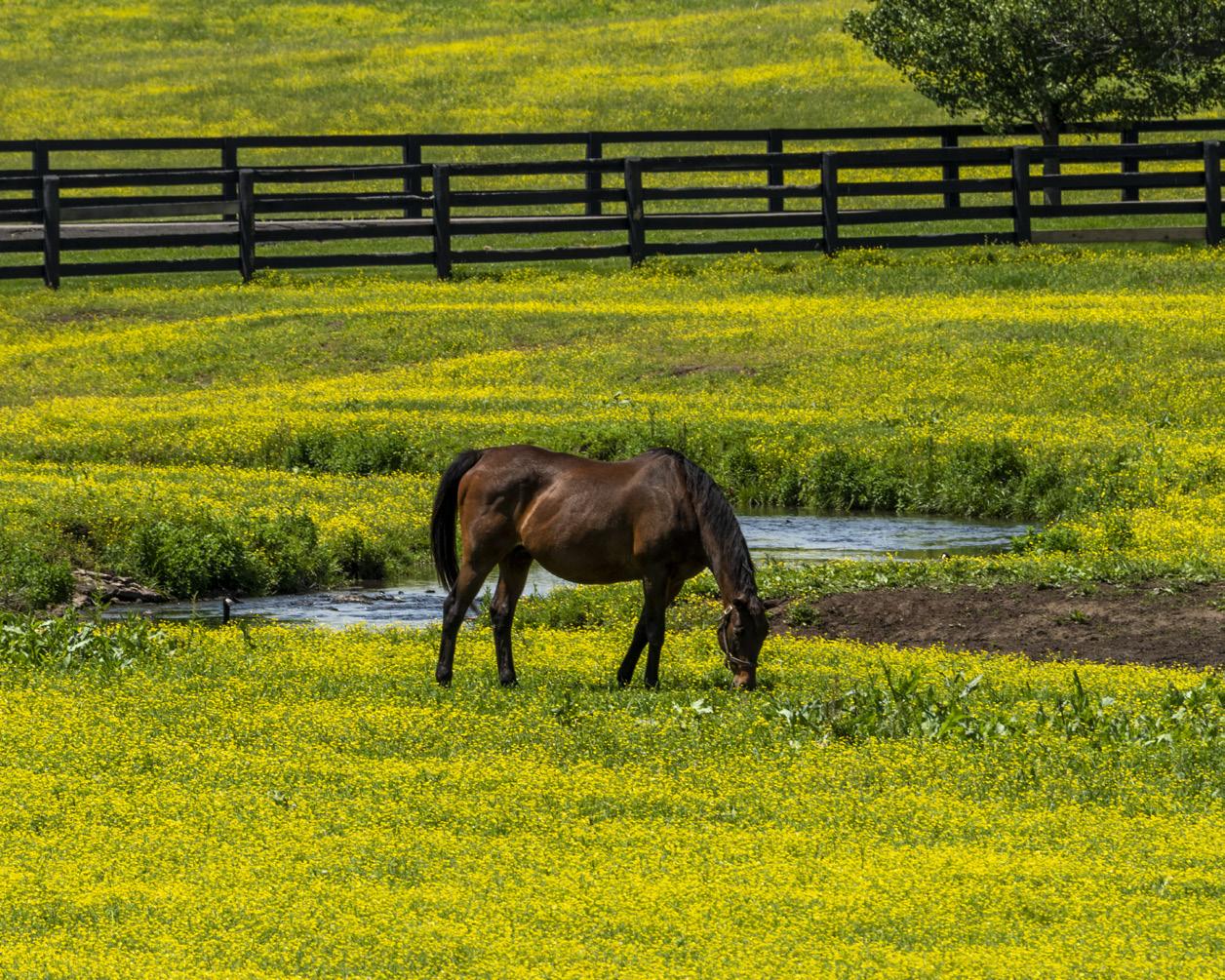UK Pastures Please!! Recap: Controlling Troublesome Weeds in Horse Pastures

Central Kentucky Agricultural Extension agents and University of Kentucky Ag Equine Programs hosted the 11th annual Pastures Please!! pasture management workshop virtually on Jan. 26. The workshop included three expert talks about managing carbohydrates in the equine diet, current herbicide effectiveness on weed control and investments for pasture management.
Bill Witt, PhD, professor emeritus in the Department of Plant and Soil Sciences, led the second discussion of the evening about new herbicides and how they protect against troublesome weeds in horse pastures.
This discussion emphasized that pasture management is a timely matter. Weeds and unwanted grasses are much easier to deal with in the early stages of development rather than the late stages. While there is no “cure-all” herbicide on the market, effective management and strategic use of herbicides can eradicate unwanted plants.
Witt began with the information that in central Kentucky, there are many weed species in pastures due to the region being geographically in the transition zone. He said that there are more than 25 species that can be easily found in a given pasture, but there is not one single herbicide or management practice that by itself controls them all.
With cool season grasses (orchardgrass, bluegrass and fescue), there are several common troublesome weeds: buttercups, thistles, ragweed, dandelions, poison hemlock, wild violets, yellow foxtail, nimblewill, plantains (buckhorn and broadleaf), purple deadnettle and chickweed.
Nimblewill is a warm-season grass that grows among the cool-season grasses. Due to it being unpalatable to horses, it is considered a weed. There is minimal selective control over this weed and its presence can be the cause for needing complete renovation of a pasture. The other weeds discussed are manageable over several courses of different treatments.
According to Witt, the reason that specialists do not have a “cure-all” weed control tool is due to the difference in time of emergence and growth of the different species.
The new herbicide, DuraCor has the active ingredient of Aminopyralid similar to other herbicides like GrazonNext HL and Milestone. The ingredient that sets DuraCor apart, however, is florpyauxifen-benzyl.
These Aminopyralid-based herbicides kill all broadleaf plants. Witt does not recommend the use of these products if a person intends on keeping clover in their pasture. Proper management of the manure and forage is a necessity when using these products because Aminopyralid remains in manure for months after use.
“Historically we have used Plateau to control tall fescue in horse pastures,” Witt said about the older pre-emergence herbicide. There has been research on its use to minimize yellow foxtail growth, but for this to be effective, the treatment needs to be done in May to early June, pasture grass must be 3-4 inches tall and foxtails should be 4 inches or less in height.
“The other herbicide that is used occasionally in horse pastures is called Sharpen. It is for pure stands of cool-season grasses and kills clover that’s out there, or anything else if it’s small. This particular product was being used in the grain crops for a while and is foliar applied,” Witt said about the herbicide.
Sharpen should be applied at 1-2 ounces per acre with methylated seed oils at 1% with water or liquid nitrogen. It is functional for small weeds only.
Witt also spoke about spray drift management. Reading labels carefully and heeding the restrictions are important measures to take. Understanding that the surrounding plants and crops could be impacted by the choice to use herbicides is key to doing so successfully. The active ingredients in an herbicide don’t play a role in the physical drift, but they do play a major role in the adverse effects.
Pasture herbicides cause distinct, obvious symptoms. Plants such as grapes, flowers and tomatoes are the most susceptible to injury from herbicides. Because of this, Witt encouraged getting help using herbicides if a person is uncomfortable spreading the products themselves.
The talk can be seen on the KY Forages YouTube channel at New Herbicides: Do They Provide Control of Troublesome Weeds in Horse Pastures? Dr. Bill Witt.
Sydney Carter, a junior majoring in equine science and management and minoring in journalism, is a communications and student relations intern with UK Ag Equine Programs.
